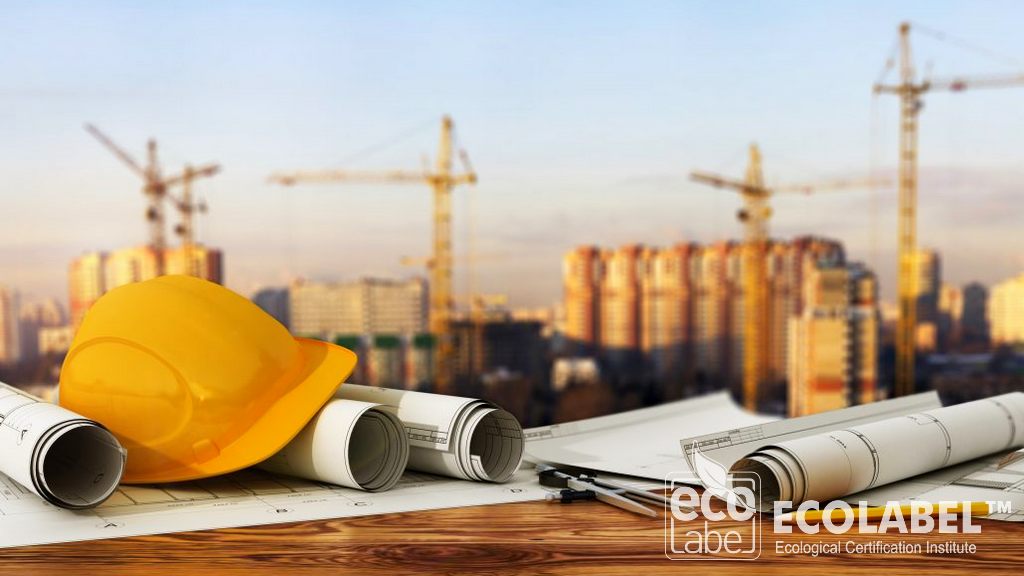Eco Label
Certification
Contact Us
- Mahmutbey Neighborhood
- Dilmenler Cd, No: 2
- Bagcilar, 34218
- Istanbul Turkey
- +90 212 702 20 00
- [email protected]
ECO Label ™ International Certification © 2021 ecolabel.org
It is possible to reduce or eliminate negative effects in construction and building design, construction or operation, and to create positive effects on our climate and natural environment, thanks to the structures that use environmentally friendly materials. Environmentally friendly buildings protect valuable natural resources and improve our quality of life.

There are a number of features that can make a building green. These include:
Any building can be an environmentally friendly building, whether it is a home, office, school, hospital, community center, or any other building, provided it includes the features listed above. Used when transforming a complete building or structure into an environmentally friendlyConstruction and building materials must comply with certain standards and criteria.
In chipboard and other materials, contaminants can dissolve from binders and mix into indoor air. This can cause irritation of the throat, illness, headache and respiratory problems, as well as mucosal inflammation in the eyes and ears. ECO LABEL certified wood-based materials are low emission.
Wall paints are used intensely indoors. It is therefore important that the products have low emissions and are also otherwise harmless to health. Recently, new criteria have been established for interior paints. The most important change is that ECO LABEL certified interior paints no longer contain biocidal preservatives. Paint manufacturers must provide analytical proof of this.
Wallpapers made from waste paper help conserve resources and prevent environmental impacts associated with pulp production. Paper production is among the main economic sectors that consume energy and carry water loads. First of all, wood chip wallpapers are additionally breathable and therefore have a positive effect on indoor air quality.
Varnish is a coating material that is applied thinly to surfaces and hardens by chemical or physical processes. As a result, the surface is sealed and protected. Improving the visual appearance of the surface is also part of a variety of different varnish applications. Coating indoor surfaces with varnish and paints similar to varnish can pollute the indoor air, so choosing the right product is very important. ECO LABEL is awarded on the basis of an assessment of the product formulation or an emission test. ECO LABEL ensures that the varnishes are low in emissions and solvents and also contain low levels of contaminants.
Facade fires, environmentally harmful flame retardants, rainwater pollution due to leaking biocides from plasters for external thermal insulation composite systems, and styrofoam insulation as future hazardous waste - there are numerous press reports that put these issues against climate protection benefits. However, exterior insulation is the most effective way for the consumer to contribute effectively to climate protection. In the long run, this saves even money. The use of ECO LABEL certified external thermal insulation composite systems helps to minimize potential environmental impacts so that the benefits for climate protection far outweigh the negative impacts.
Well-being is a trend and ECO LABEL has a clear focus when evaluating the health effects of products, especially those used indoors. ECO LABEL certified elastic floor coverings, such as rubber or cork floor coverings, emit very small amounts of pollutants into the indoor air of children's rooms, bedrooms and other rooms and therefore do not affect the health of residents.
Large-surface floor coverings have the potential to affect indoor air quality, especially. In addition to flexible floor coverings, ECO LABEL gives eco-labels to textile floor coverings, drawing the attention of the consumer to a healthy alternative in this product sector. The label is assigned to textile floor coverings that release particularly small amounts of organic compounds and formaldehyde into indoor air.
Products made of wood or wood-based materials such as interior floor coverings, panels and doors can cause environmental impacts during their manufacture, use and disposal.
ECO LABEL takes into account the entire life cycle of a product and above all supports the use of wood from sustainably managed forests and low-emission wood-based materials.
Fortunately, the days of flooring flooring with solvent-containing adhesives are gone. Today, we use adhesives that can be diluted with water, but they can also cause health problems because they are not the same as solvent-free, contaminant-free. The adhesive may still contain various non-volatile organic substances. These substances gradually evaporate from the adhesive over a long period of time, passing through the floor, into the air we breathe or bond themselves to household dust. This is not the case with ECO LABEL certified adhesives.
Floor mats are products that are placed under laminate, parquet or carpet flooring. Their purpose is to absorb impact sound even on uneven sub-surfaces while fighting cold feet. Floor mats are made of different materials depending on the application: for example, wood, cardboard, cork, rubber or various foam and non-foam plastics.
The materials meet the relevant environmental requirements for ECO LABEL certification. However, all underlays need to be low-emission, because to guarantee a health-oriented floor structure, all components from the adhesive to the cover layer must be low-emission because what they can do is an unpleasant property of pollutants.